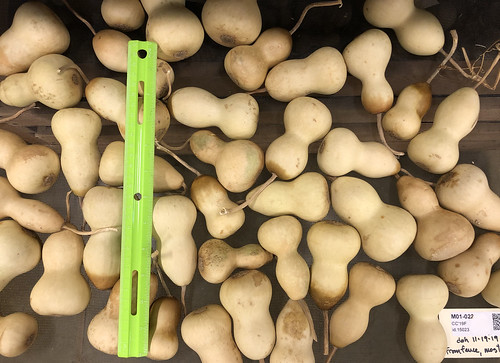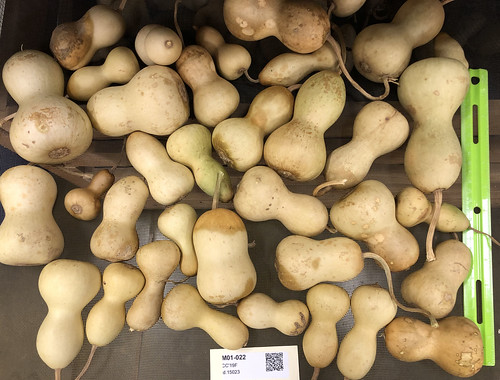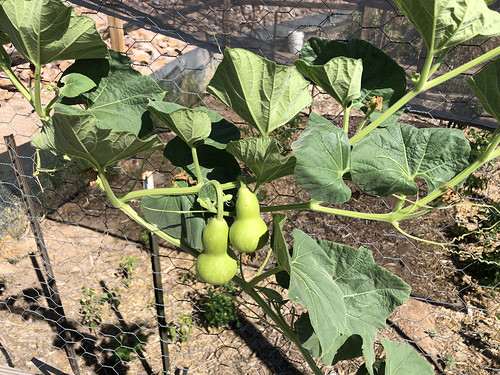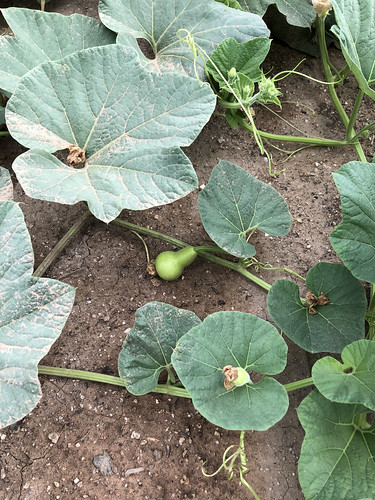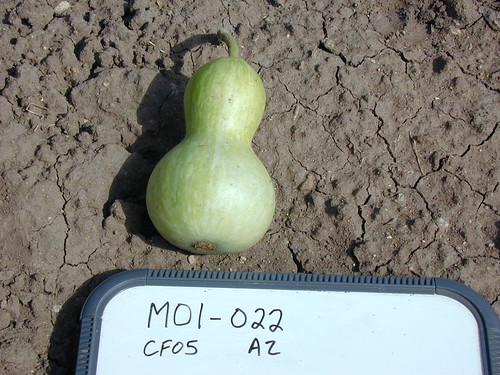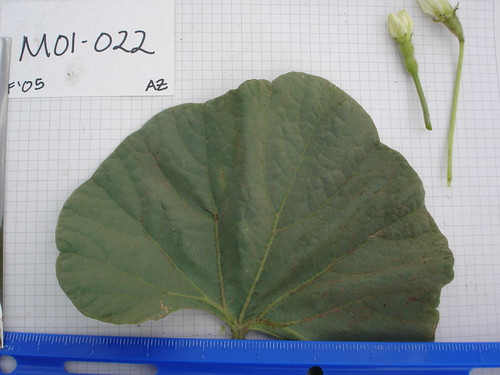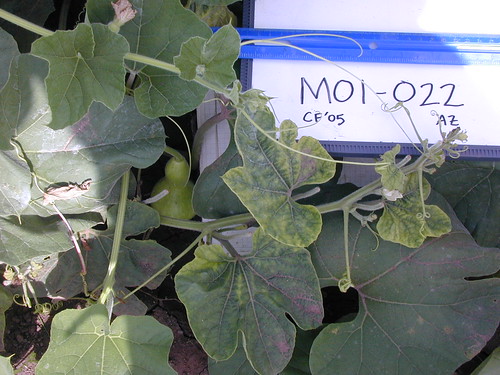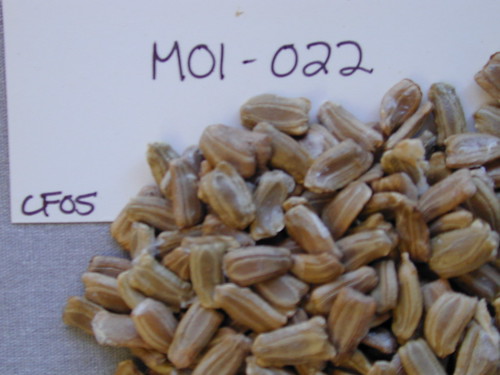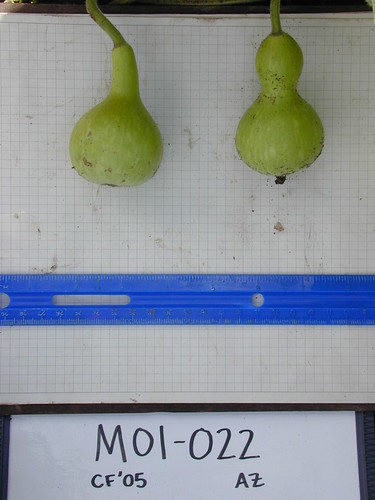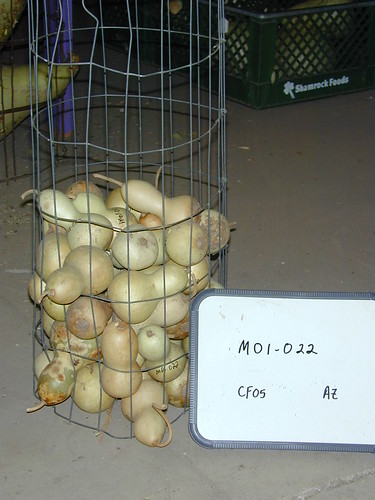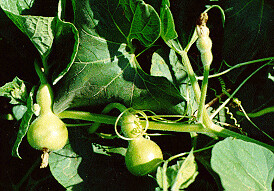ADAPTS
the Adaptive Drylands Agriculture Portal for The Southwest
M01-022
Collection | Availability | Map | Climate | Photographs | Observations | Cultivation & Seed Saving | Feedback
Basic Collection Information and Status
Gourd (Lagenaria siceraria, Cucurbitaceae)
Cultural Affiliation multipleCollection Site Colorado, United States (latitude: 38°; altitude: 14,200 ft / 4,300 m)
Collection Year 1981
Accession Status Active
Catalog Information and Instructions
Peyote CeremonialM029
A small (2-4") bilobal or dipper gourd used for crafts and as rattles by the Native American Church.
View All 2 Accessions of Peyote Ceremonial (M029) (this will reset your search)
View All 2 Accessions of Peyote Ceremonial (M029) (this will reset your search)
Current availability of this variety is summarized below. We encourage the use of these seeds to benefit humanity and strive to facilitate access through a number of channels.
Online Order Native American Free Seed Community Seed Grants Bulk Seed Exchange ? Contact us for current availability.
Academic Researchers ? If you are an academic researcher with an interest in this accession, please get in touch with us. We encourage use of the seeds for appropriate research applications and are committed to protecting the rights of the people and cultures who developed and maintained this diversity and to its continued availability.
Note: Seeds are distributed on a variety-by-variety basis, rather than accession-by-accession. As there are multiple accessions of this variety, please contact us if you need seeds of this specific accession.
Collection Site
The circle in the map below shows the area where this accession was collected (why isn't the precise locality shown
?Precise collection localities are hidden in order to protect the privacy of the original donors of the seeds in the NS/S collection.
). You have not specified a reference site, but you may specify one and rerun your search.The graphs below summarize aspects of the climate for this accession's collection site. You have not specified a reference site, but you may specify one and rerun your search.
Photographs
The Native Seeds/SEARCH digital photo collection for this accession is provided below.
image hosting provided by Flickr — all photos © Native Seeds/SEARCH — please contact us for permission to useCharacterization and Evaluation
The table below lists observations of this accession's characteristics (why are characters sometimes listed more than once
?For some accessions, observations of a particular trait have been recorded over more than one season or location; these are indicated by the different values in the Lot column.
).| Character | Observation | Lot, Frequency and Comments | Character Description (Source and Code) |
|---|---|---|---|
| fruit shape | Dumbbell | lot: CF '05 | (Bioversity 4.2.3: 8) |
| fruit shape | Bilobal | lot: CF '05 | (Bioversity 4.2.3: 8) |
| habit | Prostrate | lot: CF '05 | (Bioversity 4.1.1: 7) |
| note | Positive for Squash Mosaic Virus, neg. for CMV 8/24/05 | lot: CF '05 | |
| secondary skin color | Cream | lot: CF '05 | (Bioversity 4.2.6: 4) |
| skin color | Green | lot: CF '05 | (Bioversity 4.2.5: 2) |
| skin pattern | Speckled | lot: CF '05 | (Bioversity 4.2.7: 1) |
| skin texture | Smooth | lot: CF '05 | (Bioversity 4.2.8: 1) |
| stem-end fruit shape | Flattened | lot: CF '05 | (Bioversity 6.2.5: 3) |
| tendrils | Present | lot: CF '05 | (Bioversity 6.1.5: *) |
| Gourd Introduction | Cultivation Instructions | Seed Saving Instructions |
|---|---|---|
| The earliest known domesticated plant. Used for ladles, rattles, canteens or containers, as well as musical instruments. Can be carved, burned or painted. | Sow 1" deep after soil warms in spring (scarify for better germination). The long climbing vines require plenty of room. Plant next to a fence or trellis, or in basins under a tree. Requires plenty of water throughout the long growing season. | Annual. Varieties will cross-pollinate. The night-blooming white flowers are moth-pollinated. Fruits should mature on the plant until the stems are brown and the fruit lightweight, or until frost. Dry until the gourds are beige and the seed can be loosened by shaking. |
If you have questions or feedback about this accession or the ADAPTS platform in general, please contact us.
